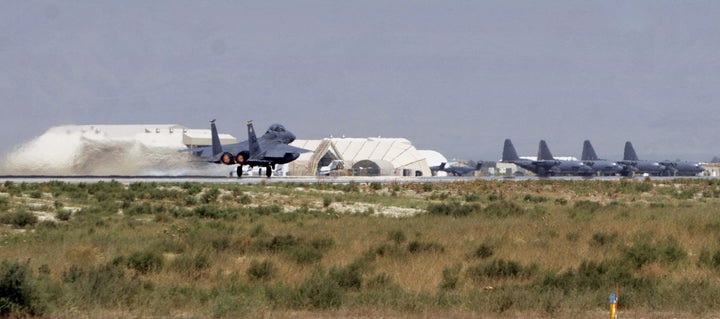
When the U.S. military opened a new detention facility in Bagram in late 2009, I gave credit where credit was due. "It's clear that the authorities looked back at lessons learned from eight years of blunders and abuse in designing the new lock-up facility," I wrote in a Huffington Post piece. But today, the Open Society Foundations released a report that focuses on allegations of inhumane treatment at a separate and smaller facility, which is co-located on Bagram Air Base.
Former detainees interviewed for the report stated that, both under the Bush and Obama administrations, they were held in excessively cold isolation cells; supplied inappropriate or inadequate food, bedding and blanketing; denied exposure to natural light; unable to carry out their religious duties; restricted from exercise; and kept from meeting with the International Committee of the Red Cross. They also found it humiliating when, during medical exams, they had to expose their naked bodies in front of guards standing in the examining room.
These allegations, if true, appear to violate U.S. rules on detainee treatment, including those in the Army's Human Intelligence Collector Operations Field Manual, and Common Article 3 of the Four Geneva Conventions of 1949, which prohibits "cruel treatment and torture," and "outrages upon personal dignity, in particular humiliating and degrading treatment." For example, the field manual prohibits exposing detainees to excessively cold temperatures and requires authorities to provide detainees with adequate blanketing.
As I stated to the Associated Press, "We're not talking about being threatened to death in interrogation with drills to their head, we're talking about run-of-the-mill detention conditions that when seen as a whole create a very troubling pattern."
The facility has gone largely unnoticed over the years, primarily because government officials treat it with extreme sensitivity; they have not publicly commented on the nature, purpose, or location of this facility.
That the facility sits on Bagram Air Base raises a slew of bigger question that my report doesn't address: Who exactly runs this facility and why is it needed? Why all the secrecy? The new large Bagram prison, called the Detention Facility in Parwan (DFIP), similarly has interrogation facilities and isolation cells. Wouldn't it be better to keep detainees in this more humane facility for interrogations? Are the benefits of the classified facility outweighing the negativity it fosters in Afghans who pass through it?
The good news, if you can call it that, is that the military can take simple and immediate steps to reduce some of the potentials for mistreatment, such as informing detainees at the facility that they can request additional bedding, blanketing, food and water without reprisal. Beyond that, if the military is adamant about keeping this facility open, then it may need to build a new facility to allow in natural light, increase the size of cells and provide space for exercise.
A two-pronged review is also needed. One to ensure that personnel at the facility uphold Department of Defense detainee treatment rules and standards, and another to ensure that U.S. interrogation and detainee treatment rules are in compliance with international standards. Doing so would help guarantee that the strides by the Obama administration to improve detainee treatment are not lost.